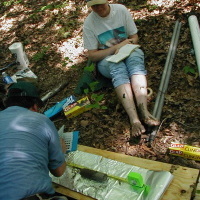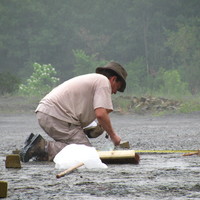Papers by Calisto Gwatirisa

Ecological Informatics, 2020
Bird species that occupy highly specialised ecological niche are susceptible to environmental and... more Bird species that occupy highly specialised ecological niche are susceptible to environmental and climatic change. These species can easily be moved into extinction by small anthropogenic or natural changes to their habitat. It is paramount to understand and assess the uncertainties of the impacts of climate change on the species to adopt adaptation strategies and provide revised management actions. Based on two emission scenarios Representative Concentration Pathway (RCP2.6 and RCP8.5) set by the Intergovernmental Panel on Climate Change (IPCC), we predicted the potential distribution of Blue Swallows (Hirundo atrocaerulea) habitat suitability under current and future scenarios using a maximum entropy (MaxEnt) model. Eight variables were selected from 21 bioclimatic, elevation and land use/ land cover covariates based on their model percentage contribution in MaxEnt and correlation analysis. Our results demonstrate that maximum temperature of the warmest month (Bio5) and precipitation of the warmest quarter (Bio18) are the most important variables in determining the distribution of potentially suitable habitat for the Blue Swallow. Furthermore, our results suggest that Blue Swallow suitable habitat will decrease with increase in latitude while decreasing with an increase in longitude due to climate change. The predicted fundamental niche was much larger than the realised niche, suggesting that other anthropogenic and ecophysiological parameters may limit occupation of the suitable habitat; thus, the actual distribution extents may continue to decline in the future. We conclude that there is a negative impact of climate change on the distribution of Blue Swallow habitat and any increase in temperature results in the surge of unsuitable areas. Therefore, unless strict protection is awarded to the current suitable habitat, the suitable habitat and population of the Blue Swallow will continue to decline. Our results can be used by Blue Swallow conservationists and decision-makers to draft adaptive countermeasures to cope and mitigate for climate change.










Uploads
Papers by Calisto Gwatirisa